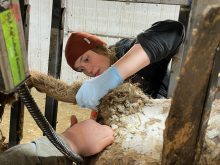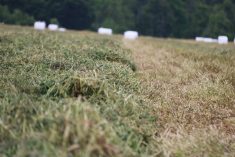CALGARY -ÊMost people can’t pronounce deoxyribonucleic acid, but they have a pretty good idea what it is.
DNA, the double helix of genes that marks each individual, has become an important aspect of livestock identification. It is the difference between paying for an animal by the pound and paying more because of the animal’s value for breeding.
DNA fingerprinting has been used for identification since 1985 and the technology is constantly changing.
Well known for its use in identifying criminals who left traces of semen or blood at the scene of a crime, DNA is also valuable for proving the parentage of humans and animals.
Read Also

Feds propose overhaul of chronic wasting disease control program
Chronic Wasting disease control program getting updated by Canadian Food Inspection Agency with feedback encouraged from producers.
Blood typing has been the definitive method to determine an animal’s parentage, but several purebred associations are now insisting DNA tests be used.
As individual as a fingerprint, tracing DNA detects fraud or errors and guarantees a pedigree, says Gerry Kraay, who heads the blood testing lab at the Saskatchewan Research Council.
“Genetic evaluation is not possible if you don’t have a correct pedigree,” said Kraay at the recent Canadian Charolais Association convention in Calgary.
When the blood lab receives a sample, it checks whether a calf has characteristics from its sire and dam in its blood. If different traits show up in the blood test, the stated parents aren’t true. And if the pedigree isn’t valid, an animal’s value drops sharply.
Blood no longer needed
The lab needs whole, unclotted blood for accurate tests. However, for DNA tests, a hair sample with follicle is equally good, said Kraay.
The latest in this refined version of fingerprinting is DNA micro-satellites.
These are marker genes located along the chromosomes. Cattle have 60 chromosomes. Scientists can identify about 1,000 satellites, and by selecting about a dozen, can verify parentage.
Problem diseases like paratuberculosis can also be detected with DNA testing. This can be done in 24 hours, rather than waiting for results of cultures that take up to three weeks to grow.
“It’ll speed up the diagnosis of these diseases very quickly,” said Kraay.
His staff in Saskatoon are also developing a DNA bank for parentage testing and research. One millilitre of blood is enough for 500 tests, and one 22 cu. foot freezer can hold 20,000 individual samples. So far, they have filled two freezers.















